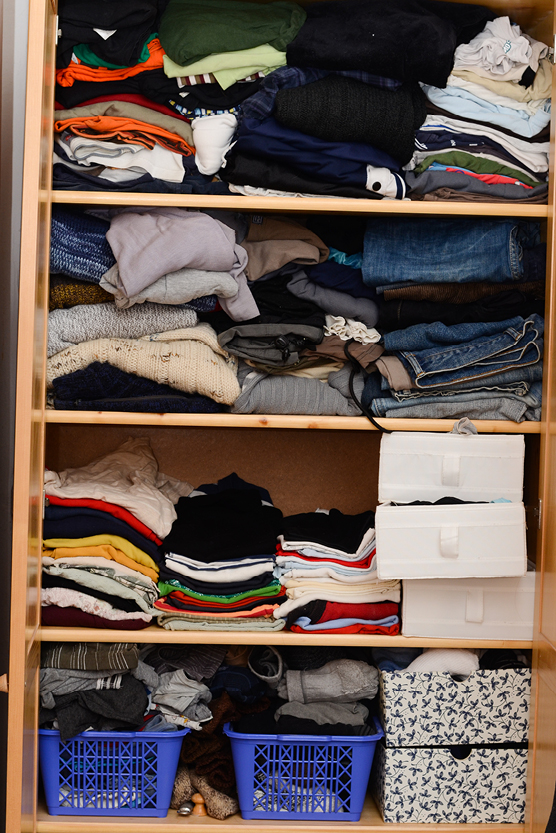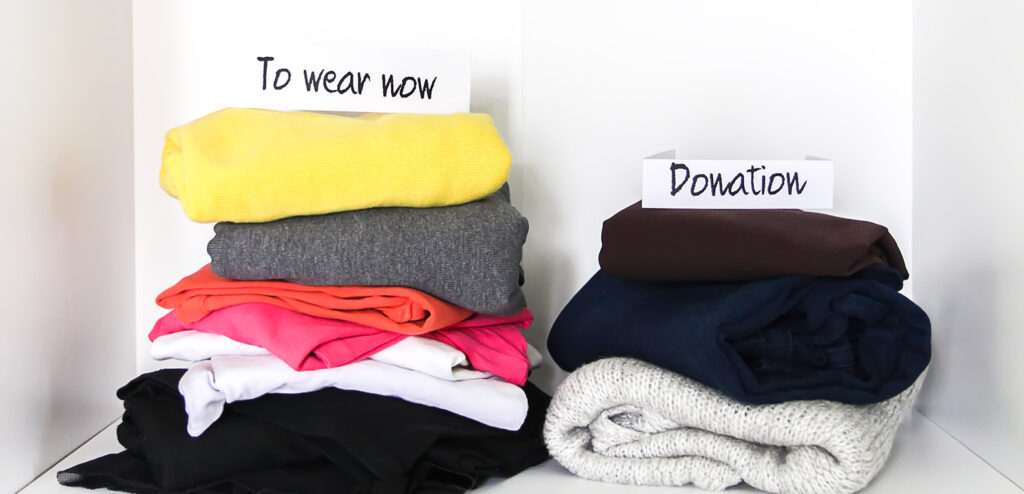Become a better consumer – connect and talk to your clothes
Imagine a rainy Friday evening. You’re watching a new crime show. Your phone chimes. You’ve received a message – from your wardrobe. It’s your T-shirt, writing: “Hey, it seems that you’ve forgotten about me since it’s been a long time since you wore me. Maybe I can be of better use to someone else? If you’d like, I can publish an ad for myself. A reasonable price would be 50 Swedish crowns. What do you think?”
The idea of an interactive and connected wardrobe that, for example, gets in touch with you if you haven’t worn a garment for a long time to tell you that it may be time for the garment to move on within the circular flow of reuse may sound like science fiction. But the fact is that a small pilot project on this has already been carried out in the framework of the F/ACT Movement at Science Park Borås.
The system behind the connected wardrobe could take many different forms, but one could be a mobile application and some kind of “tag” that is integrated into the clothing. Upon use, you scan your garment and the app can store statistics about your use. The garments among your wardrobe that are left unused for a long time then communicate with you, calling this to your attention. You can then make these clothes available for sale, exchange, or lending through the app.
“The basic idea is about influencing consumers to make more sustainable choices. The garments become interactive in a way that can support sustainable behavior. It becomes an interaction that works via “nudging.” You will be reminded that, via your wardrobe, there is the potential to make more sustainable choices,” says Adrian Zethraeus, Project Leader for the F/ACT Movement.
Having a connected and interactive wardrobe also creates the opportunity to raise awareness about the consumer’s clothing use. That’s something that can create a foundation for changing consumption behavior.
“Today, we can have very large wardrobes, with perhaps more than 100 garments. However, we very rarely use more than a small proportion of these on a regular basis. By creating communicative possibilities between you and your garments, it can also change your image of your wardrobe. You can get information about how long and how often you use your garments, something that draws your attention to your daily activities. If you know about your behaviors, it may be easier to change them,” explains Vijay Kumar, a researcher at the Swedish School of Textiles who is also involved in the pilot project.
Connected wardrobes
In addition to the above technical possibilities, the user needs to feel that the system adds value. When it comes to this, the music industry has been of interest. This is something that Jonas Larsson, researcher at the Swedish School of Textiles and Smart Textiles at Science Park Borås, explains further.
“When you talk about similar projects, it is often a hindrance that it will cost money for the individual consumer. It is inescapable in this case, too, but the starting point has been – can we come up with a way that means people are willing to pay twice as much for fashion consumption than before? Today, we see a streaming industry where people pay more per year for their music than they did before, yet they do not own the music. We think that in a similar way, by connecting wardrobes with each other, we can create a wider range of choices for consumers.
It will thus be possible for people to increase their consumption through access to more clothing, but with potentially less environmental impact.”

“Through this system, you could borrow clothes from people close to you, sell them on a secondary market, have them repaired, and some cases even recycled. It will be mean improvement in how clothes are obtained, accessed, and used. Except that it can be much more expensive then,” continues Jonas Larsson.
By connecting your clothes, you can connect to others. The vision is that a connected wardrobe can be integrated with social networks and communities where you can exchange or lend your clothes.
“One element may be that you are connected to people who have the same size and preferences as yourself on a network. If you have something that they need or vice versa, you can borrow it from each other. This could really create an environment where we live out sustainable consumption,” says Vijay Kumar.
Important for circular business models
In addition to storing and communicating information about a consumer’s clothing use, other information can also be available through the same connected system: the number of owners, who made the garment, and the material composition of the garment. That’s something important from a commercial perspective.
“Both traceability and information transfer will be basic parts of scaling up the circular business models. This applies to to any circular scenario; mend, reuse, or recycle. No matter how you work circularly, such information is important,” says Adrian Zethraeus.
However, there are still major issues to be resolved before such a system can be launched on the market.
“Being able to store information in a garment can, as Adrian has mentioned, be incredibly important when making the right decision about a garment’s second life. However, there are currently major challenges around data collection when it comes to privacy and GDPR. In order to carry out a project like this, it is necessary to examine things further so that data can be handled securely and correctly. This, together with creating a user-friendly system, will be the biggest challenges for the connected wardrobe,” Jonas Larsson concludes.

—————————————————–
Learn more about F/ACT Movement
